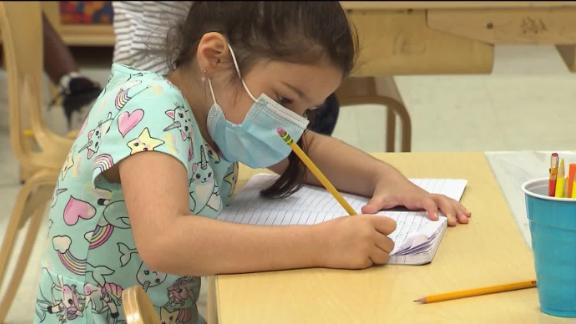‘We’re very unique’: El Paso school districts, TEA come up with new reopening plan based on virus hospitalizations

EL PASO, Texas (KVIA) -- Coronavirus cases have dipped and surged in the Borderland ever since the fall semester began. As a result, reopening plans for school districts have been in limbo.
This week, a new safety plan was developed to help schools reopen their campuses safely. District superintendents, the Texas Education Agency, and El Paso's representative for the state's Board of Education have developed a reopening plan for public schools in our region. It provides reopening benchmarks based on coronavirus hospitalization rates in the El Paso area.

The plan is based on four safety zones. In the red zone, when more than 20% of patients in El Paso hospitals have Covid-19, school districts are able to continue virtual learning for nearly all students. In the orange zone, when hospitalization rates are between 15 to 19.9%, daily on-campus instruction must be provided to all elementary-aged students whose parents request it. In the yellow zone, when hospitalization rates are between 10 to 14.9%, daily on-campus instruction must be provided to all students who wish to attend on-campus instruction in all grade levels, but some capacity limits still apply. In the green zone, on-campus instruction must be provided to all students who request it with no restrictions.
As of Thursday, El Paso had a coronavirus hospitalization rate of 42%, placing the region in the red zone. All school districts are therefore allowed to continue virtual learning for most students. If districts choose to open up further, they are allowed to.
Prior to this plan, each school district in Texas was only given funding for 12 weeks of virtual learning. If district officials wanted to delay reopening plans, they had to request an extension with the Texas Education Agency. As weeks went on, some districts began to exhaust their extension waivers.
It's part of the reason that Clint ISD officials had originally told students they would have to return to classes this week. The district has since changed those plans.
In all zones, priority populations must be given access to daily on-campus instruction. These populations can include children of essential workers, children without internet access and children with learning disabilities. Districts have until November 9 to separately define those populations and come up with a plan to welcome them back.
Georgina Perez, the Texas State Board of Education representative for District 1, which includes our region, helped work on the new guidelines. She says trying to make each individual district follow the same statewide guidelines was not working as well as this plan could.
"We're very unique in Texas in that we have one of the largest ISD's (independent school districts) in the state, being El Paso ISD, and then one of the smaller ISD's in the state, being Sierra Blanca," she said. "There are 254 counties in Texas. There's not going to be one plan that fits every county, so doing this on a regional approach does make sense."
Perez said the diversity of our school districts goes beyond their size.
"Not only do we have the very large disparities in student enrollment, we also have a very different set of circumstances in the urban setting, to the suburban setting, to the rural setting, to the remote setting and being on the border," Perez said. "It's kind of a microcosm of all of Texas right here in our trauma service area."
In all zones, all parents still have the choice to keep their children learning from home.
